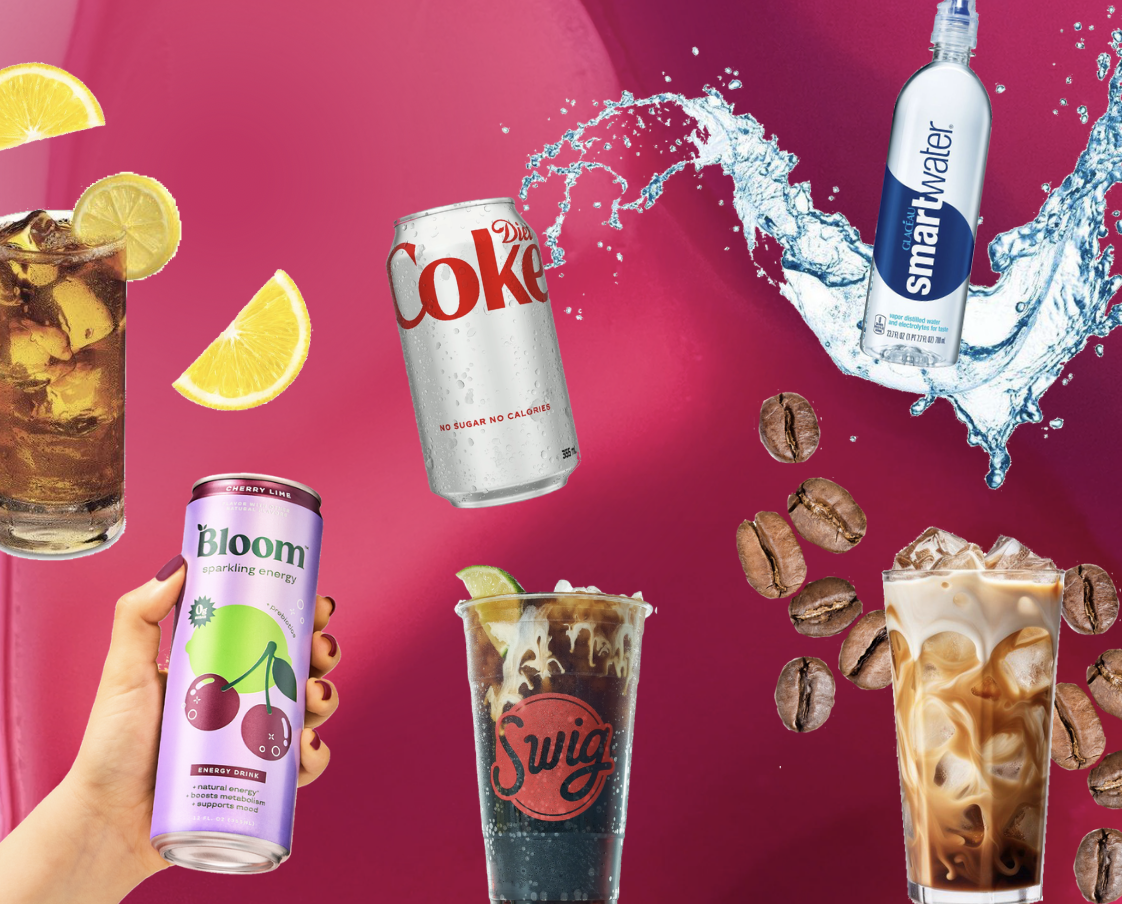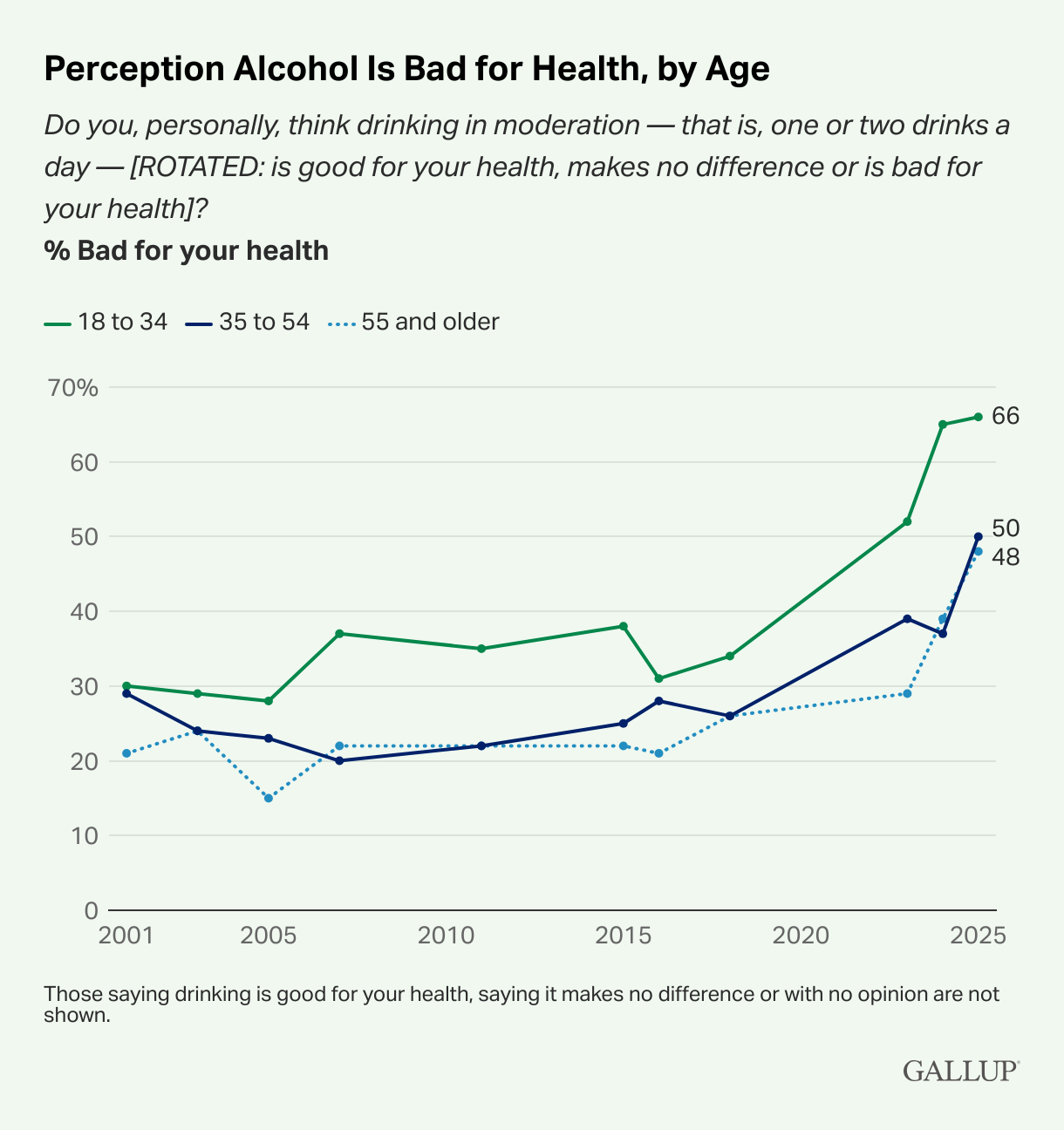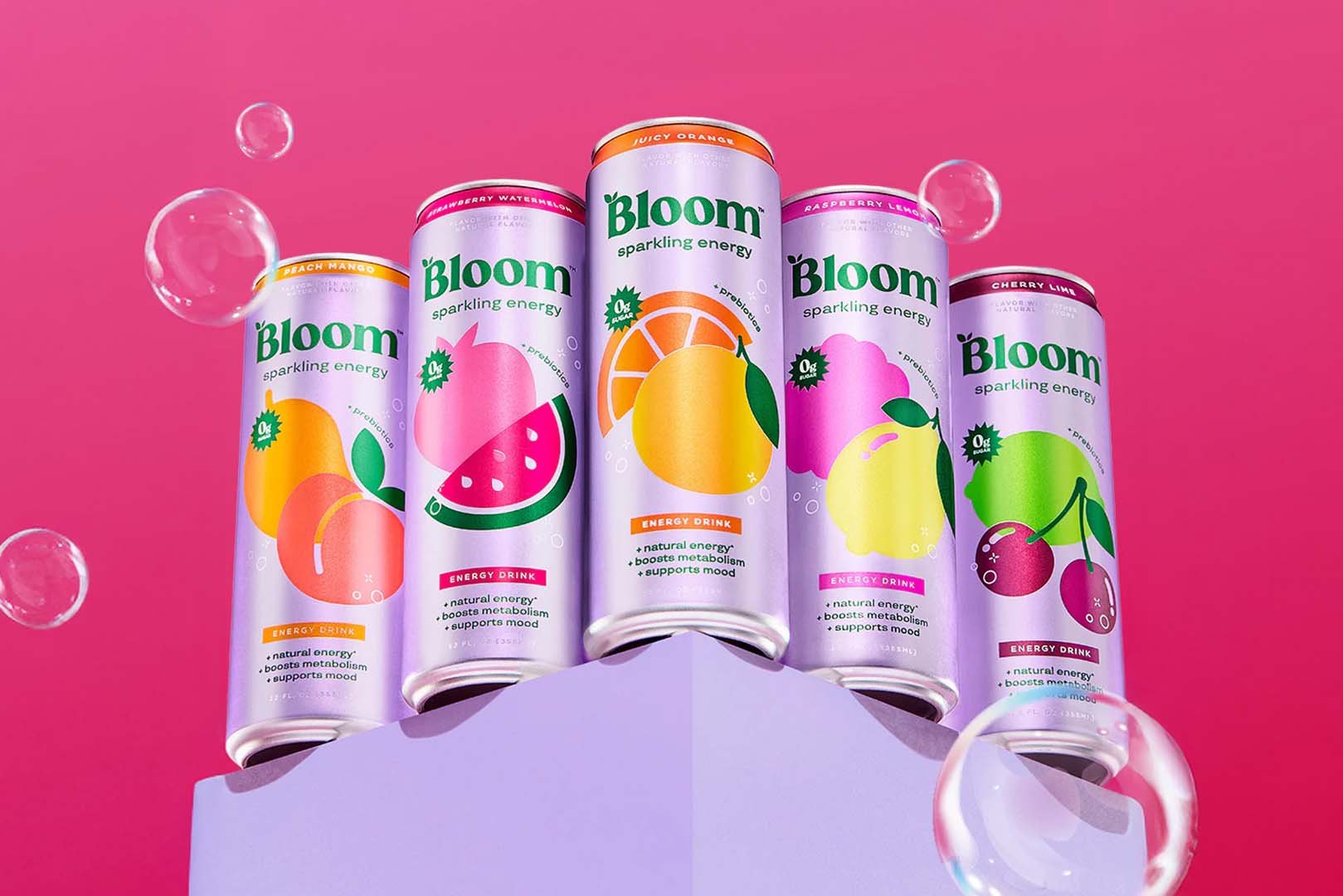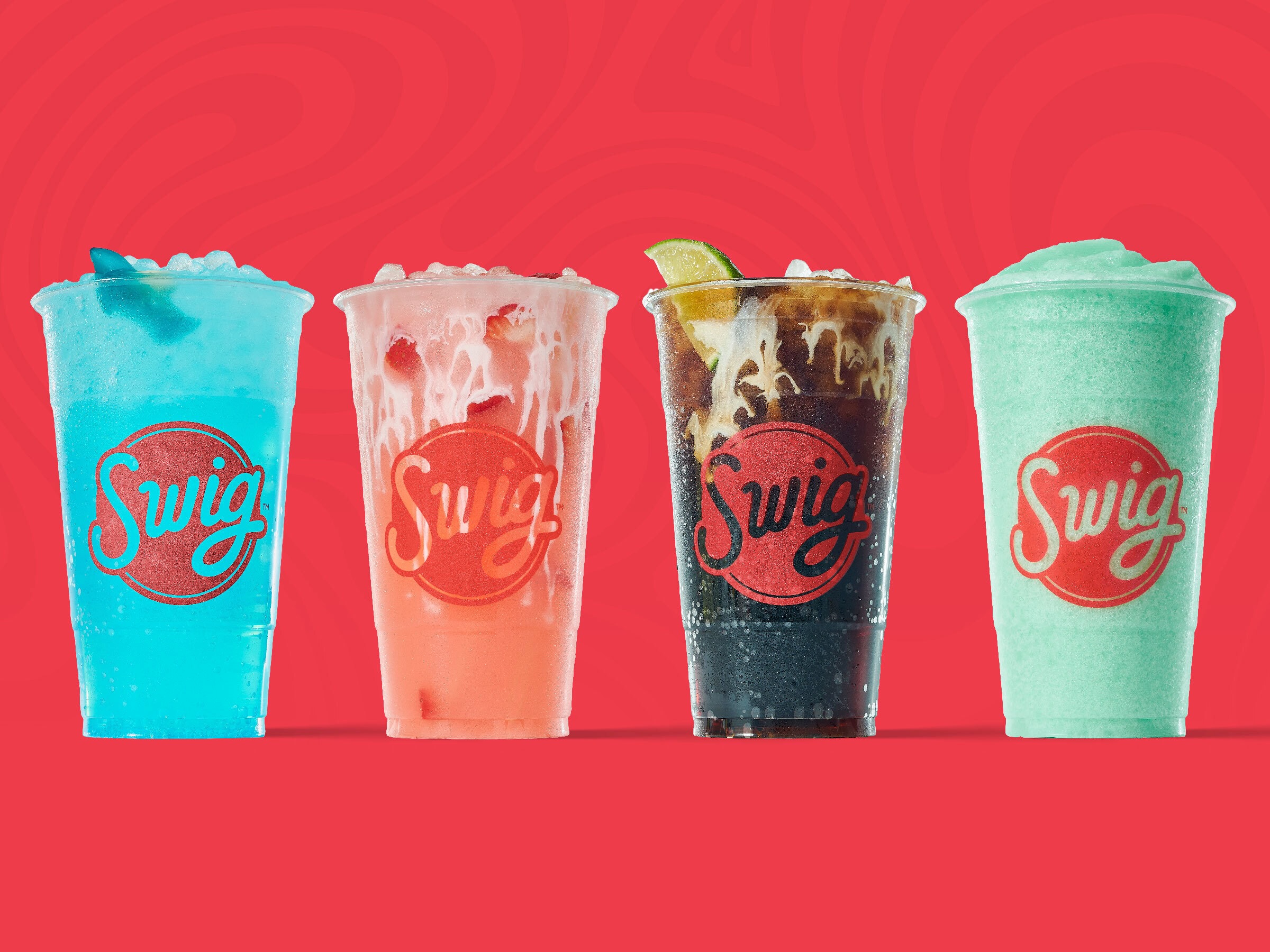

Is drinking culture dead amongst the younger generations? That appears to be what recent polls and studies are showing. Instead of reaching for a beer or cocktail on the weekend, they’re partaking in other drinks: “functional beverages.”
There are a multitude of reasons as to why the younger generations (those ages 18 to 34) aren’t active, frequent alcohol drinkers. From a greater sense of wellness, interest in these so-called “fun beverages,” increasing prices, to mindfulness of alcohol’s negative effects, younger people have reframed what it means to socialize and unwind.
And because of this shift, it seems that drinking may no longer be the default. For some, a night out doesn’t require alteration of their ability to think reasonably and act properly, instead it’s found in the instant dopamine boost of simply pulling an energy drink from the fridge or embarking on a coffee run in the early morning, followed by a Diet Coke to wind down in the evening (for some reason it's quite the craze).
Let’s Look at The Numbers
In a recent study by Gallup, it was found that young adults (aged 18 to 34) who participate in drinking alcohol is roughly 50%, a rate that has dropped when compared to their prior study two years earlier which reported 59%. These numbers place young adults right next to older adults in terms of who is a greater participant in alcohol consumption.

So what’s driving this trend?
Let’s take a look at an assortment of reasons for why younger adults are reaching more for the mocktails than they are cocktails.
A Shift Toward Wellness Culture
We’ve all seen it—collagen face masks, fish oil pills, endless supplements, workout bands, and red light therapy. This is likely what you think of when you hear the term “wellness culture.” Yes, the term has earned itself a bad reputation through its trendiness and promotional features, but the intent behind it is valuable. It’s certainly worth pausing for a moment to consider the health implications for the things we consume and partake in. A prime example of this: alcohol.
In the same Gallup study performed in 2025, nearly 66% of young adults perceive moderate drinking to be bad for health. This is a considerable increase from 51% in 2023.

In recent years, we’ve found out that alcohol can have serious health implications. According to the American Cancer Society, excessive drinking can increase your risk of developing certain cancers, such as liver cancer. Even a drink here and there can pose the risk for other types of cancer, such breast cancer. The consumption of alcohol can cause damage to body tissues, alter how the body absorbs and removes harmful, foreign chemicals, alters natural levels of hormones, and increases weight. And, it’s important to note that when it comes to cancer risks, “the amount of alcohol you drink over time seems to be the most important risk factor… the type of alcoholic drink isn’t as important.”
So when it comes to the connotations alcohol possesses as of recently, then sure, it has given more than enough reason for young adults (who are more likely to accept these realities) to stay away from alcohol.
So before you brush off “wellness culture,” just remember that some skepticism is healthy—and you can be better for it.
The Rise of “Functional Beverages”
For many young adults, who are either on-the-go, busy college students, recent college graduates at their first “adult job,” or are newlyweds tackling how to file taxes and train their puppy simultaneously, the preferred drink isn’t alcohol at the end of the day—it’s a caffeine boost to start the day.
There seems to be a shift towards what could be called a “beverage obsession”—the inclination to start one’s day off with a caffeinated drink, followed by an afternoon pick-me-up, all while making sure to stay consistent with drinking water.
The popularized drinks—Celsius, Alani, and Red Bull—have been the go-to choices for those who dislike the taste of coffee. And while this preference is fine, it’s become known that caffeine too has its health implications, especially considering all of the additives you’ll find hidden in plain sight in the ingredients list. From sucralose to taurine to higher-than-recommended doses of caffeine, these drinks might not be the best alternatives to get in your “fun drink of the day.”
I mean, tack on the fact that there’s been rumors swirling about on social media that a woman found a rat at the bottom of her Alani can. Other rumors include suspicious ingredients in Celsius that could be flagged as cocaine for athletes who participate in regular drug testing. Of course, these rumors have caused a flurry of speculation across social media platforms, but again, a healthy skepticism is needed so we can flag this for future reference.

A Movement to Make “Functional Beverages” Good For You
With the rumors and other health concerns, a rise in newer, healthier “fun drinks” has come to the forefront. There are numerous, trendy brands that have ditched artificial caffeine for natural caffeine. But what’s the difference?
There’s surely a big difference.
Natural caffeine is derived from plant sources such as coffee beans, tea leaves, guarana, and yerba mate. It’s absorbed much more slowly into the body, meaning it provides for a longer-lasting energy boost without the crash. Some brands that are based on natural caffeine include Bloom Nutrition Sparkling Energy, Bubblr, ZOA, and Ice Sparkling Caffeine.
Artificial (or synthetic) caffeine is derived from lab-created chemicals such as urea. This is quickly absorbed into the body, meaning a sharper spike in energy that will likely result in a faster crash. Most well-known drinks that use artificial caffeine are Celsius (they use a synthetic and natural compound), Red Bull, Alani Nu, and Rockstar.
While the caffeine types share an identical chemical compound, the way in which our body processes them are slightly different as mentioned above. Not to mention, natural caffeine has the advantage of antioxidants, vitamins, and minerals not present in synthetic caffeines.
I mean, if you think about it… wouldn’t you want to stay away from lab-produced anything?
And this is precisely what some young adults are tapping into: the perceived risks that come with artificial additives.
This has promoted the rise of brands such as Bloom Nutrition, a women’s health and wellness company. Their Sparkling Energy Drinks are tailored to this cultural shift that is prioritizing wellness while also being aesthetically-pleasing. In their product description, they tap into these numerous components: “Made with zero sugar, natural caffeine, and good-for-you ingredients like prebiotics and lychee, each 10-calorie can increase energy, boosts metabolism, and promotes mental focus—without the crash.”

And, not to mention, prebiotics are definitely trending. These are essentially gut-healthy ingredients (fiber) that promote digestive health. From Olipop and Poppi, both prebiotic sodas, to Bloom Nutrition, brands are finding how to incorporate wellness-based ingredients into everyday, tasty “functional beverages.”
And some people are even taking this to the next level: crafting what is called “dirty soda” or “dirty mocktails.”
Crafting Your Own Specialty Beverage
If you’ve ever watched the trending show, The Secret Lives of Mormon Wives, you’re probably familiar with the concept of dirty soda: the mixing of a soda base with flavored syrups and a splash of cream, all poured over ice. The trend originates in Utah, as one of the most popular soda chains, Swig, resides there.

Because of the greater inclination towards non-alcoholic beverages, this makes dirty soda a curious option. Recently, Yelp released that its searches for “dirty soda” were up over 600% from 2023. So, instead of mixing up tequila and vodka, it seems like more people are mixing their coffee creamer with Coke.
And it seems like this is also a cheaper alternative to alcohol.
The Question Is: Do I Have The Funds For a Night Out?
As mentioned earlier, the young adult category consists of people ages 18 to 34. This is exactly the stage in life when people are enrolled at college, in pursuit of a career, or are at the start of family life. And as prices across the nation continue to rise, this could be a factor as to why more people are choosing to stay in on the weekends rather than going out on the town.
And for this, we could infer that more people are choosing those dirty sodas (or a humble glass of wine) than an overpriced drink at a bar. If you ask me, it’s just more “economical.”
Surely, every now and then it is permissible to go out, but it’s just not a frequent expenditure in the cards for broke college students.
So why does any of this matter?
It may be far-fetched to assume that all young adults are partaking in alternatives to alcohol, but it’s undeniably encouraging to see rates of alcohol use trending downward.
The decline doesn’t mean everyone has sworn off drinking—it simply means the cultural script is changing. (And this doesn’t have to mean that a drink here and there is absolutely horrible; it just means that more people are uncovering the reasons as to how, when, and why they drink—and choosing options that foster improved health and a more fruitful life found in other, more fulfilling things).
And that shift is worth paying attention to.
Sierra Ozolins is a West Michigan native, currently a student at Hope College. As an athlete, she is passionate about fitness—from running to weightlifting. With a interest for politics and lifestyle, she is intrigued how local culture, community, and everyday events shape the world around her—often with an iced coffee in hand and her dog by her side.